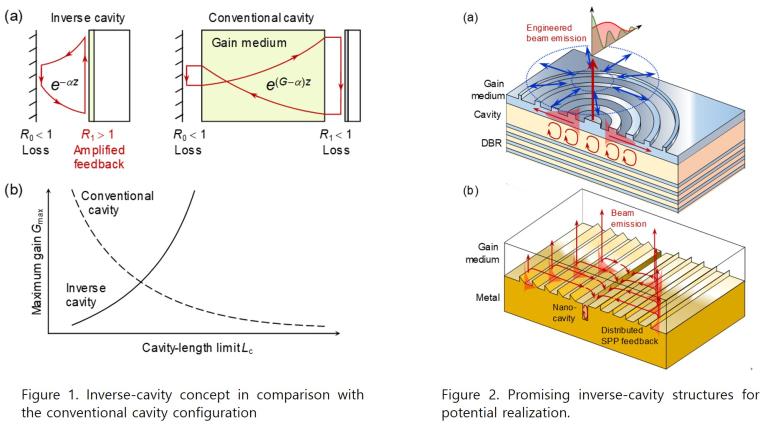Micro and nano lasers - Microstructure optics lab
Micro and nano lasers
The miniaturization and integration of photonic and plasmonic devices has improved photonic integrated circuits and lead to a wide variety of new application areas. Especially, the miniaturization of lasers opens up prospects for on-chip optical communications, data-processing, medical imaging and sensing, three-dimensional display, and holography.
The miniaturization of lasers has consistently raised an intrinsic challenge, high gain threshold. Compared with macroscopic lasers, micro and nano lasers associated with photonic resonances require active materials with larger material gain because radiative loss must be compensated over a shorter length. Especially, plasmonic nanolasers require higher optical gain due to metallic loss as well as radiative loss. These limitations lead the choice of optical gain materials to liquid and solid-state gain materials such as organic dyes, inorganic or organic semiconductor, and quantum dots or wells. However, in order to obtain higher and higher optical gain, advanced fabrication technique or extreme experiment environment such as epitaxial quantum dots and cryogenic temperature is required.

In our laboratory, we propose inverse-cavity structures for efficient micro and nano lasers. In contrast to conventional laser cavities, inverse-cavity structures where optical gain is provided by a coherently amplified feedback mechanism instead of an intracavity gain medium require low lasing threshold as shrinking cavity dimensions (Figure 1). Using Finite elements method and rigorous coupled wave analysis, we have numerically demonstrated the inverse-cavity laser structures for photonic and plasmonic devices and far lower lasing threshold of inverse-cavity structures than conventional laser cavity structures. We are also considering non-periodic inverse-cavity structures to realize laser beam engineering application and single plasmonic nano lasers with ultra-low lasing threshold (Figure 2).